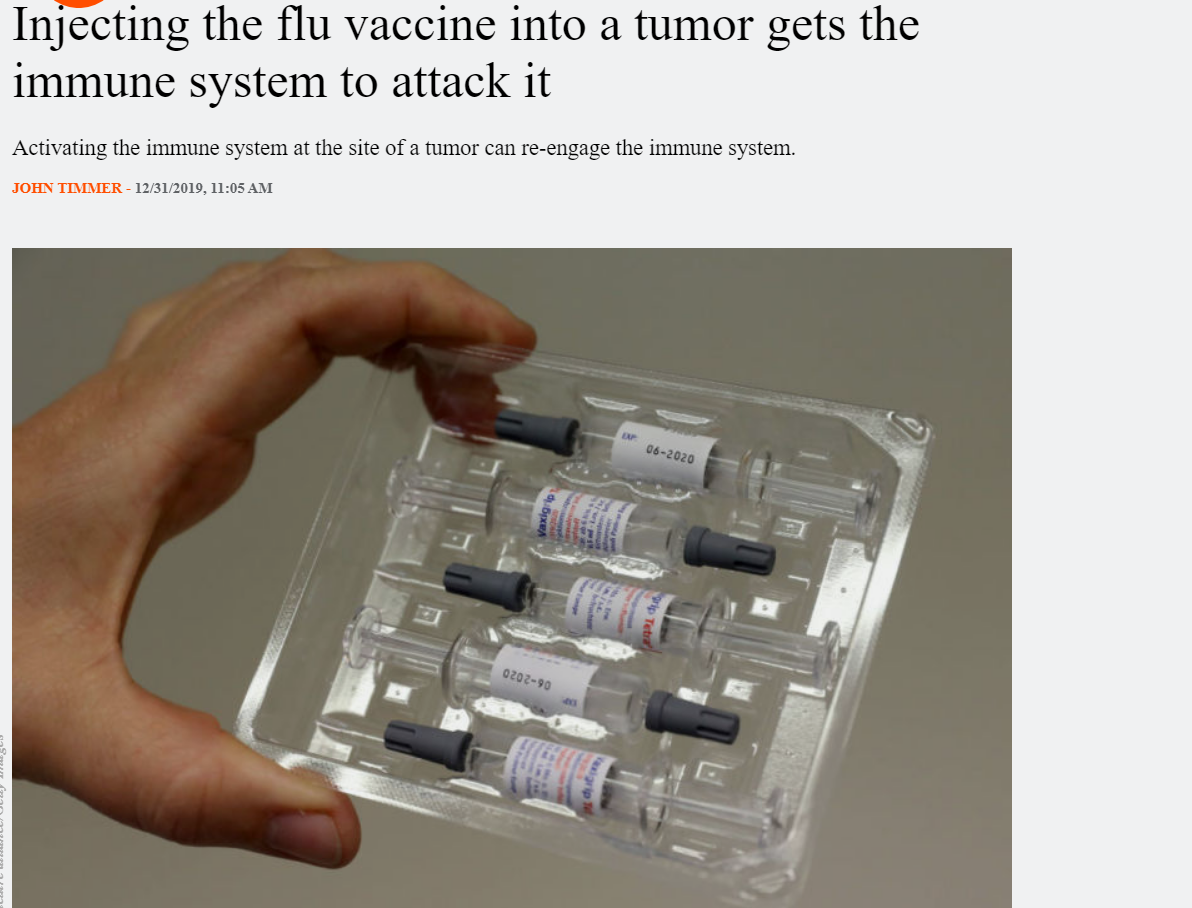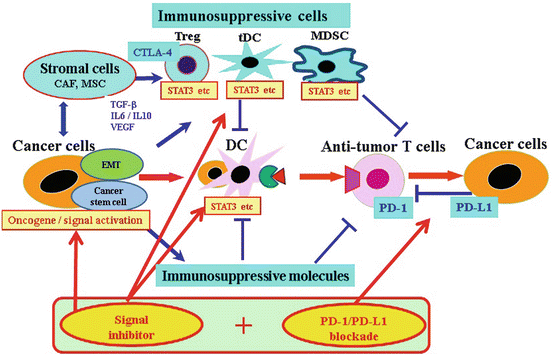So you guys may have seen this in your news feed recently, and I thought I’d give my $0.02 on it as a tumor vaccine researcher.

It’s pretty exciting stuff, always, to see innovations occurring but this kind of thing is something we’ve known and been doing or decades. There are several ways in which tumor vaccines work. The difference between them and traditional, preventative vaccines are that tumor vaccines are usually THERAPEUTIC. They basically try and create specifically targeted immune cells that target your cancers through using proteins, or bits of DNA or even just killing off whole tumor cells and hoping the immune cells that are generated from cleaning out this ‘tumor infection’ we created are primed to kill your tumor cells.
But in this experiment, they basically skipped trying to prime the immune system to a particular cancer cell or cancer cell target, and injected flu vaccines straight into tumor microenvironments, in the hope that this would spark a general immune response that would also result in cancers being recognized (as they normally should be) by the immune system.
Often what cancers do as they develop is create a microenvironment that’s immunosuppressive – which doesn’t allow immune cells, even if they do infiltrate the microenvironment, to create tumor-specific responses. They do this via creating areas which have immunosuppressive cytokines everywhere around a tumor, and also by producing proteins (called checkpoint proteins, eg PD-L1, which cancer cells start releasing after a while, binds to various T cells to stop them from activating and killing cancers) which inhibit immune cells from attacking cancer.
A great video that summarises how Checkpoint Inhibitors, an exciting new development in immunotherapy, work.
What the flu vaccine in this case does is create an environment that’s the opposite – that’s suddenly immunogenic, where inflammation is occurring, bystander tumor cell death may be occurring and at the very least, where we’ve got less immunosuppressive factors, and more activation of your immune system, occurring right next to cancer cells.

This picture shows a few of the pathways that tumors use to dampen immune responses against them. The flu vaccine, it appears, can mitigate or reduce a chunk of these!
This isn’t the first time that viruses have been used to increase the immunogenicity against tumors. Various viruses, from Herpes in brain cancer, to Newcastle disease, are used to boost the efficacy of a tumor vaccine, and some have, like Herpes in brain cancer, been used on their own to enhance tumor cell death.
Indeed, I’ve written up the most recent review on how to use viruses, and numerous other strategies, to increase the immunogenicity of tumor vaccines. It’s yet to be published, but will be soon – look out for that (sign up to my email list and I’ll ensure you get a copy when I’m able to release it)! It’s fascinating stuff that I chose to work on because it requires you diving DEEP into the mechanisms underlying immune evasion by cancers and immunotherapy in general.
But though it’s great we’re seeing results of the flu vaccine working on its own – its potential to be combined with tumor vaccines is amazing. Whole cell tumor vaccines, which is the type of tumor vaccine I studied (they essentially kill off a person’s tumor – with radiation, electricity or other means – and reinject it back into your body to awaken your immune system to targets that are now clearly visible to the immune system), could definitely benefit from this boost.
And if you also combined this with other therapies, like checkpoint inhibitors, well, we’re already seeing remarkably good results coming from such combinations.
The great thing about these therapies is the fact that similar to regular vaccines, tumor vaccines are often really well tolerated. Other than discomfort and swelling at the cancer site, and sometimes a few more systemic symptoms, most human trials show decent results with minimal side effects. But though this is true, the efficacy of tumor vaccines on their own is often not that great compared to other therapies.
That’s why studies like this are exciting. I reviewed the major ways in which we increase the ‘immunogenicity’ or reactivity of tumor vaccines, in my paper. Finding another way to do this that’s innocuous, and perhaps may be occurring already (as the paper points out – there is an association of people who’ve had the flu and higher survival outcomes in lung cancers), is only going to improve patient outcomes, and that’s awesome.
So though this isn’t a HUGE NEW DISCOVERY – it’s still an awesome one to have been made, and provides just another reason for people to get their flu shots, which, as I talk about in this video ARE SAFE AND EFFECTIVE!
Leave a Reply